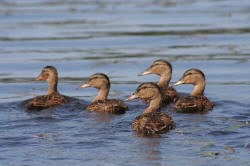Conjunctions: the essentials

Warning: this is a complex grammatical area and authorities differ sharply in their analyses. What follows is an essential guide, not the end of the story by a long, long way. For more, you should look at the in-service guide to conjunction, linked in the list of related guides below.
 |
Definitions |
A working definition of a conjunction is:
a word used to connect clauses or words within clauses
Can you identify the conjunctions in these examples?
- It was raining but we went for a walk anyway.
- There was no bread and no butter.
- I came early so I could help you get ready.
- I don't know whether to laugh or cry.
- If you can let me know tomorrow, it would be a great help.
- I can give you a lift and I can take the dog, too.
Click here when you have an answer.
- It was raining but we went
for a walk anyway.
This conjunction joins two clauses together. You can't reverse the order of the clauses and keep the same meaning.
*We went for a walk anyway but it was raining
is nearly nonsense. - There was no bread and no
butter.
Here the conjunction and joins two noun phrases, no bread + no butter. We could replace it with something like
There was no bread or butter
and retain the same meaning. - I came early so I could
help you get ready.
This is similar to sentence 1. and this time you can reverse the clauses and get approximately the same meaning:
So I could help you get ready, I came early
but there is a difference in emphasis. - I don't know whether to
laugh or cry.
Here, we have a conjunction which comes in two parts. They operate together and must both be present to make any sense. - If you can let me know
tomorrow, it would be a great help.
This is a common conjunction but you can reverse the clauses and still retain the same basic meaning (albeit with a shift in emphasis). - I can give you a lift and I
can take the dog, too.
Here, the conjunction and is joining two clauses rather than two nouns, as in sentence 2., but the function is the same.
 |
5 things conjunctions can do |
Can you classify the conjunctions in the examples above into the following five categories? Click on the table when you have an answer.

Conjunction also perform other functions but for most learners of English the table contains the ones they need.
 |
3 types of conjunctions |
Now we know what conjunctions do in sentences, we need to look at their grammar. In the examples
above, we actually have three sorts of conjunction rather than five.
This is a tougher task but can you identify these three types in the
example sentences? Again, click on the table when you have an
answer.

Some notes:
- Coordinating conjunctions can only be placed between the clauses they connect.
- Subordinating conjunctions on the other had are a bit more
mobile. We can say, e.g.:
She came because I asked her
and
Because I asked her, she came
with approximately the same meaning (although the emphasis varies).
However, some subordinating conjunctions require a certain ordering because of the logic of what we are saying. We can have, therefore:
He was bored so he went to see his friends
and we can have:
He went to see his friends so he was bored
but the meaning is radically different. - Some of the correlating conjunctions (the ones with a negative
implication) sometimes require us to insert a question form so we
say:
Barely had I taken my seat when the play began
This is called inversion, incidentally (and slightly misleadingly).
 |
Lists |
Here's a list of some of the most common conjunctions in English, ordered by type, with examples. Your task is to think of examples of your own so you are sure you understand.
| Coordinating conjunctions | Example | Subordinating conjunctions | Example | Correlative conjunctions | Example |
| but | Not me but Mary | because | He came because I asked | whether ... or | I'll say it whether you want me to or not |
| so | I came so I could help | if | If you go now, you catch the bus | not only ... but (also) | He is not only attractive but he's also rich |
| for | I can't read for the light is too dim | although | He drove although he was drunk | as ... as | He is as stupid as the day is long |
| and | I went and saw him | than | He works harder than she does | both ... and | Both my sister and her husband came |
| or | Either you stay or go | before | He arrived before I was ready | no sooner ... than | I was no sooner in the bath than the phone rang |
| yet | He works hard yet he gets nowhere | why | That's why you dislike him | either ... or | She will either explain it or show you how to do it |
| nor | I won't go nor will I let you | when | I'll come when I like | rather ... than | I would rather have a tooth out than watch that |
The only complete list in the table above is column 1. There are only 7 coordinating conjunctions in English by most reckonings. The other lists can be extended very considerably and the functions of much more closely defined and categorised. Some of that is in the in-service guide to conjunction, linked below.
 |
Recognising conjunctions |
As with other parts of speech, you can't tell what class a word is by looking at it. You have to look at what it is doing. For example:
- Has he arrived yet (adverb
vs.
I know he has arrived yet I can't see him (conjunction) - I have only been once
(adverb)
vs.
Once I've been, I'll know what the problem is (conjunction) - When did you see him?
(adverb)
vs.
I'll come when I have the time (conjunction) - I did it for John
(preposition)
vs.
I couldn't so it for it was too hard (conjunction) - I've been here since this
morning (preposition)
vs.
I have since regretted it (adverb)
vs.
I'll tell you since you ask (conjunction)
 |
Issues for learning and teaching |
- As we saw above, conjunctions are not recognisable instantly by their form. Learners need to know what they do.
- The form and use of conjunctions vary widely across languages and translation is difficult. In some languages, a two-part
conjunction is required for ideas represented by because and
so and
there is a temptation to produce, e.g.:
*Because it was late so I took a taxi
etc. - English is rich in conjunctions and if we aren't careful, the sheer number and variation can bewilder the learner. We need to analyse carefully, therefore, when deciding what we present and how we present it.
- Communicatively, one can get away with short staccato sentences, neglecting conjunction use altogether, but any level above the most elementary will require good conjunction use.
| Related guides | |
| conjunctions in English | for a list of conjunctions in English |
| guide to conjunction | for a more technical guide with links to more detailed discussions |
There is a test on some of this.
